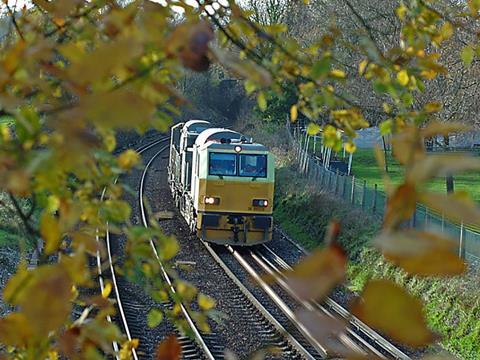
UK: The Rail Safety & Standards Board and University of Sheffield are collaborating to investigate how more detailed information on temperature, humidity and the presence of leaf layers or other contaminants can be used to predict low-adhesion track conditions caused by leaves on the line.
The project aims to combine high-resolution video footage with AI data analysis to deliver more accurate predictions about friction at the wheel-rail interface.
One of the outputs will be an online tool to generate friction predictions for anywhere on the network in time for autumn 2023.
This project forms part of the cross-industry ADHERE programme of research to achieve adhesion conditions that are unaffected by the weather and climate. This builds on previous research by RSSB which found that rail head friction conditions can be estimated using images of the rail head and surroundings and other sensor data.
‘While people may think of leaves on the line as a joke, or just an excuse used when a train is delayed, the reality is that it’s a very serious issue’, said Paul Gray, Professional Lead Engineering at RSSB. ’Low adhesion causes significant safety risks and operational problems, costing millions of pounds to manage.
’Our new research project will use artificial intelligence and data analysis to predict and identify where and when low adhesion is going to occur on the rail network. This will allow targeted action at these specific locations.’

